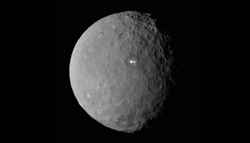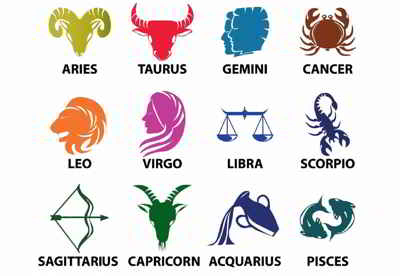Western Astrology: Modern Planets: Ceres
Ceres is the smallest identified dwarf planet in the Solar System, but is significantly the largest object in the asteroid belt.
Since the invention of the telescope, Western astrology has incorporated Uranus, Neptune, Ceres, Pluto, and other bodies into its methodology.
Chiron is a relatively new comet or asteroid (discovered in 1977). The name Chiron is taken from Greek mythology and is an immortal centaur a half man, half horse. It symbolizes a wounded healer. Those who have been psychologically or physically wounded will be able to break through the pain of the wound to heal and bring out their fullest potential. Ceres was the sister of Zeus (Jupiter). She is the quintessential Earth Mother, and rules over food, cooking and nutrition.
Western Astrology: Modern Planets: Ceres
Ceres
 |
Representing: Sickle, Ceres being goddess of corn Rules the sign: Ceres is assigned rulership over Virgo. It is in exaltation in Gemini, in detriment in Pisces and in fall in Sagittarius. Represents: Physical constitution and fertility Claimed effects on world events: Claimed effects on people: Mothering, compassion |

The biggest of the four minor asteroids used, is associated
with the mythological goddess, Ceres. It was also known as Demeter, and
according to Astrologer Zipporah Dobyns, and was associated with the symbolism of motherhood, in less emotive and more physical ways than
the Moon.
Ceres is the smallest identified
dwarf planet in the Solar System, but is significantly the largest object in the asteroid belt. It is named after Ceres, the Roman goddess of growing plants, the harvest, and of motherly love. It was the first asteroid discovered,
taking up about one-third of the entire mass of its asteroid belt. The classification of Ceres has changed more than once and has been the
subject of some disagreement. Johann Elert Bode believed Ceres to be the "missing planet" he had proposed to exist between Mars
and Jupiter, at a distance of 419 million km (2.8 AU) from the Sun. Ceres was assigned a planetary symbol, and remained listed as a planet in
astronomy books and tables for about half a century. The 2006 debate surrounding Pluto and what constitutes a planet led to Ceres being
considered for reclassification as a planet, but in the end Ceres and Pluto were classified as the first members of the new dwarf planet
category.
Ceres is the largest object in the asteroid belt, which lies between the orbits of Mars and Jupiter. Its diameter is approximately 945 kilometers, making it the largest of the minor planets within the orbit of Neptune.
Orbital period: 1,680 days and passing through a little more than 2-1/2 signs every year.
Mass: 895.8E18 kg
Gravity: 0.27 m/s?
Discovered: January 1, 1801 by Giuseppe Piazzi
Coordinates: RA 19? 24' 0" | Dec 59? 0.000'
Orbits: Sun
In mythology, Ceres is the Roman equivalent of the Greek goddess Demeter, and is the goddess of agriculture, and when her daughter Proserpina was kidnapped by Pluto in an attempt to force her to marry him, Ceres became so distraught looking for her daughter that she neglected the Earth which became cold and most plants died. This was the first autumn and winter season, which came back every year even after Proserpina had been saved by Mercury because she had eaten a pomegranate that made her Pluto's wife forever, and he demanded she return to him once a year.
The goddess (and metaphorically
the planet) is also associated with the reproductive issues of an adult woman, as well as pregnancy and other major transitions in a woman's
life, including the nine months of gestation time, family bonds and relationships. Although a mother, Ceres is also the archetype of a virgin goddess. Ceres
epitomizes independent women who are often unmarried (since, according to myth, Ceres is an unmarried goddess who chose to become a mother
without a husband or partner.) While the moon represents our ideal of "motherhood", Ceres would represent how our real and nature motherhood
should be.
Ceres, as the Goddess who has control over nature's resources and cycles, may astrologically be considered the planet of the Environment.
Returning to mythology, an early environmental villain is the figure of Erysichthon, the defacer of the earth, who cut down trees in a grove
sacred to Ceres-Demeter, for which he was punished by the goddess with fearful hunger. In this sense Ceres became an emerging archetype in the
awareness of recent climate change, and is entering our collective consciousness as a need to take care of our natural and irreplaceable
resources in the 21st century. Ceres represents a leap towards a future of ecological responsibility and knowledge. As an indicator for
environmental or community activism, Ceres would represent for some astrologers the wave of the future.





